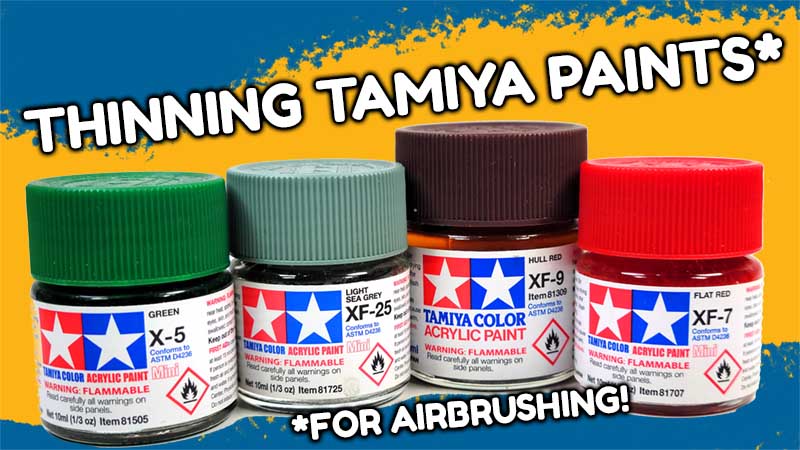Thinning Tamiya paints for airbrushing is actually very simple. It’s a very forgiving paint, and happily works with a wide range of thinners, ratios, and air pressures.
I’ve always appreciated that about Tamiya’s range of “acrylic” paints. I place quotes there because they are acrylic paints in the a stricter definition of what makes a paint acrylic. However, many modelers think of acrylics as meaning “water-based”, which is not entirely true. Mr. Color lacquer paints are an acrylic also, they’re simply solvent based acrylics.
Tamiya falls into the middle, really. They have both water and compounds that are more lacquer-like in their makeup. I’ve heard Lincoln Wright refer to these paints as “hybrid acrylics”, which reflects their nature better I think.
Thinning Tamiya Paints – Easy Peasy
Many paints require very precise ratios of thinner to paint, with little wiggle room for anything else. Others may be more forgiving of thinner ratios, but often have problems with smooth flow, clean application, and tip dry.
For the most part, Tamiya seems to avoid all of these things. As long as you’re using a thinner that comes reasonably close to being compatible, and thin the paint to something less than potato soup, it will happily spray all day.
This video examines the wide varieties of thinners that I’ve found work well with Tamiya paints, as well as a few that aren’t recommended. Thinning ratios are also examined. I conclude with a few recommendations that should help most any modeler get to airbrushing in no time!
I also have a video that talks about hand brushing Tamiya paints. Your local hobby shop will likely carry Tamiya paints, so be sure and check there first. If you’re looking for an online source, there are many to choose from. One of my favorites is ScaleHobbyist.com.


Leave a Reply